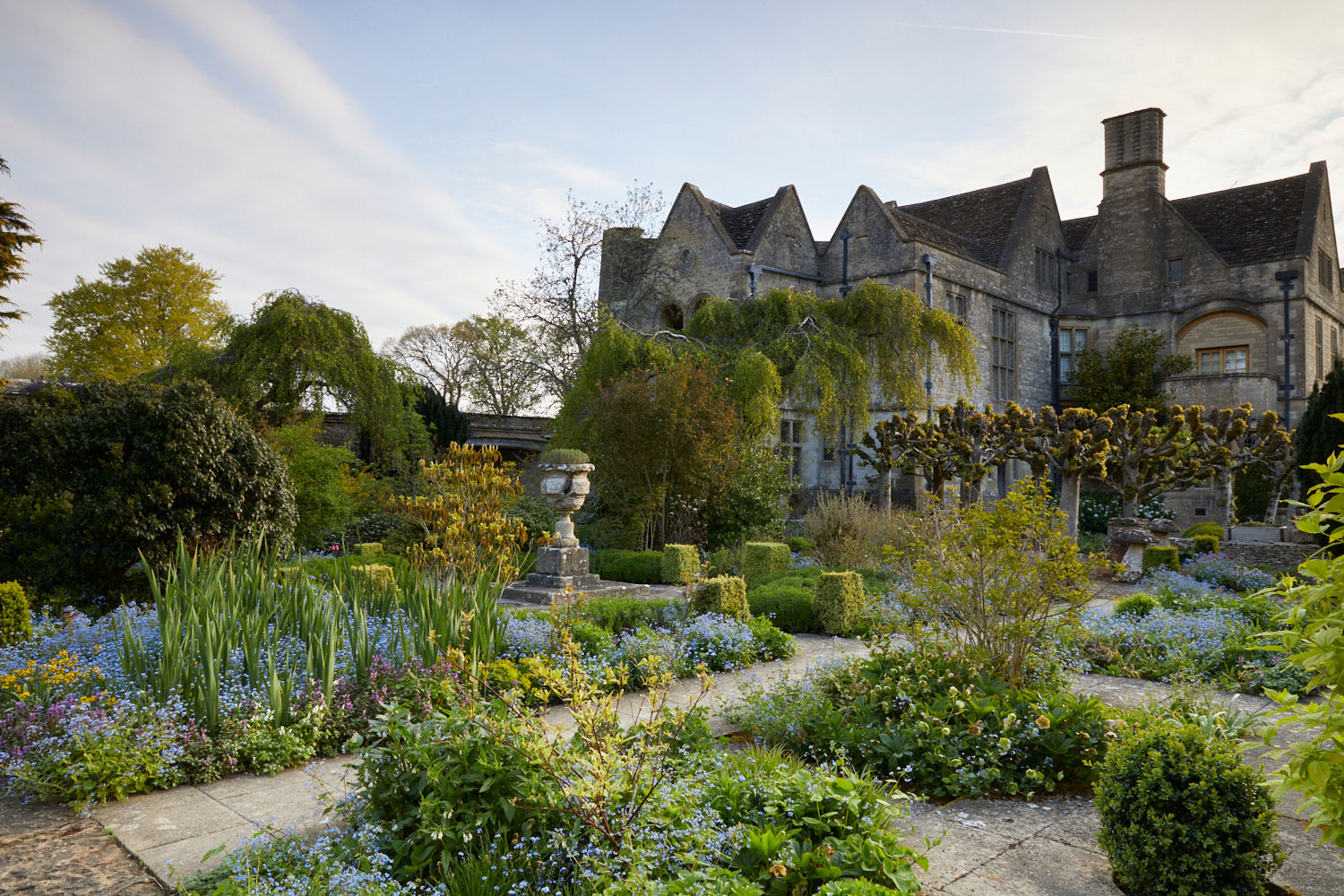Rodmarton: The Last Word in Arts and Crafts Gardens

Photography by Britt Willoughby Dyer, for Gardenista.
<a href="https://rodmarton-manor.co.uk/">Rodmarton Manor</a> in the Cotswolds has been described more than once as the ultimate Arts and Crafts house and garden.
These ideas still have currency: keeping sheep to nibble the grass is very Arts and Crafts (Vita Sackville-West’s variation was Abdul the donkey), and so is hand-woven hazel edging and willow bent into plant supports.
The Arts and Crafts aesthetic had been going strong for some time when building on the house and garden of Rodmarton Manor began, in 1909.
A giant weeping birch hangs over the romantic scene. The Biddulphs took their anti-industrial principles so seriously that steam-engines were eschewed even in converting oak trees into house beams: instead, everything was sawn by hand.
Looking back at the house, with its medieval-style turret and balcony, a narrow compartment of the garden known as ‘the Topiary’ ends with more stone vessels on plinths, called ‘the Troughery’.
The inset stone path works with the community of topiaries to lead the eye to Rodmarton’s farm and the horizon.
Yew arches, turf and irregularly-stationed trees mark the garden compartments that separate the house from fields.
An infilade, perfectly demonstrated by the ever-diminishing arches of yew shown above, is a favorite device used by designers today, revealing hints of a garden’s splendors, while requiring the undertaking of a journey.
Remnants of the original apple trees in the Walled Garden provide the kind of romance that Claud and Margaret Biddulph and friends would have surely appreciated.
The new head gardener, Sue Cranch, has cleared the glasshouses and built work benches, on which the beginnings of a new cutting garden are flourishing.
The Stone Summerhouse, flanked on either side by giant conifers, makes a vista that is as important in anchoring the garden as the house.